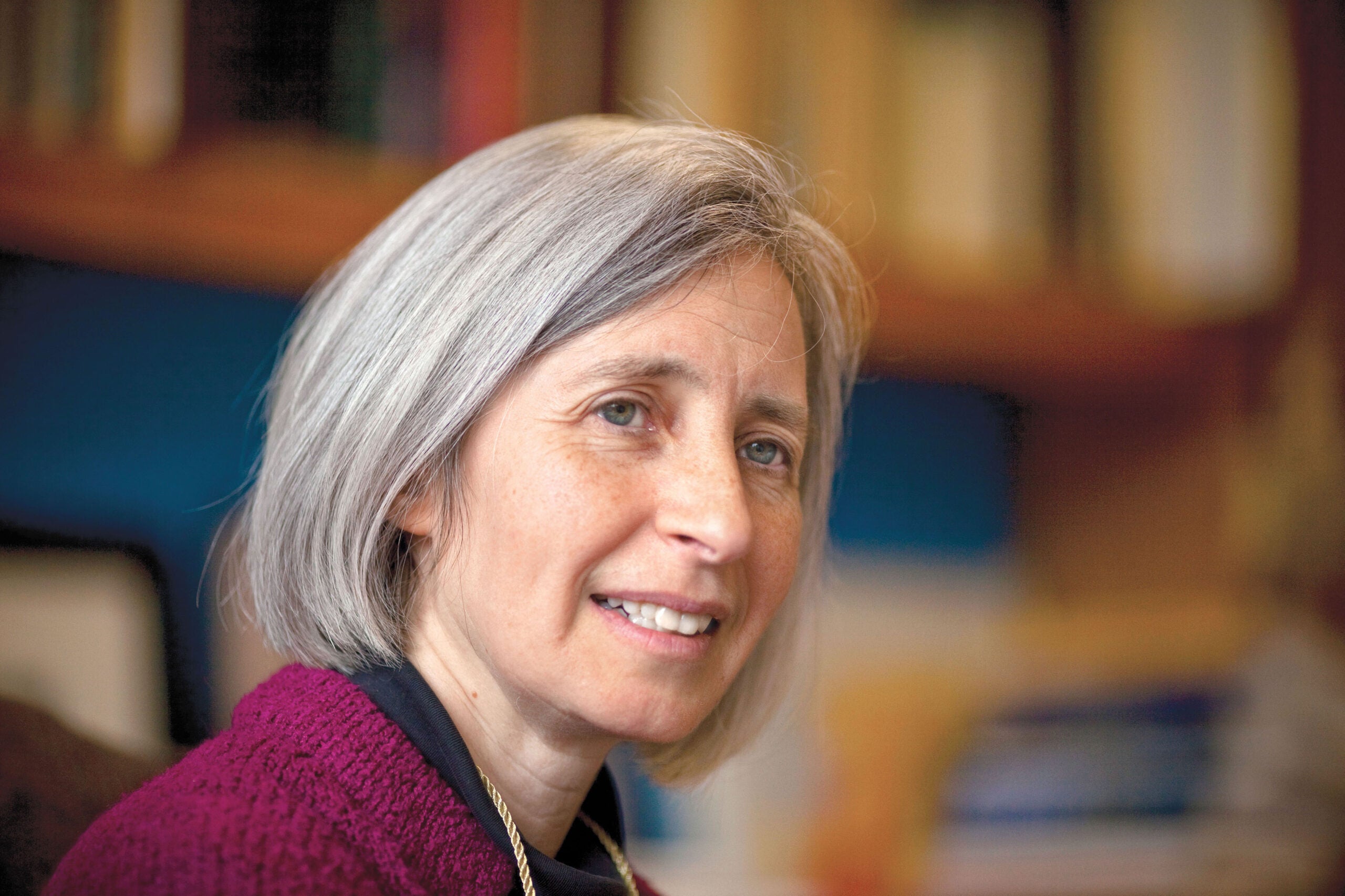The magic of education lies in the interactions between people. In this age of the virtual, we celebrate digital possibilities but we cherish the unique connections among professors, students, alumni, faculty and staff. On Nov. 19, we celebrated the future of our community with a traditional “topping off” ceremony, when the highest beam was placed at the top of our new building. Students, staff, faculty, architects, builders and members of the Dean’s Advisory Board joined in this centuries-old custom. The beam is painted white, and a small evergreen tree (for growth and good luck) and a flag are affixed to it. Before it is hoisted atop the structure, members of the community can sign it. Like the ceremony at the launch of a ship, the event affirms our identity and aspirations.
The topping off is emblematic of my experience thus far as dean. The new building demonstrates the extraordinary opportunity I have been granted to extend the work of Deans Elena Kagan ’86 and Robert Clark ’72 and Acting Dean Howell Jackson ’82. The academic wing of the new building will frame classrooms to fit the smaller class size we initiated for first-year sections; the seminar rooms will enable teamwork and small-group discussions. The student center will provide inviting settings to enrich experiences outside of the classroom, facilitating, for example, collaborations across student journals. The clinical wing will promote synergies among our dynamic programs. Throughout there are cutting-edge sustainability measures. Connecting everything is a central thoroughfare, like the boulevard at the center of a city. Indeed, this building embodies the often-used metaphor of Harvard Law School as a bustling metropolis. Dean Kagan often observed that cities are places of great creativity, cosmopolitan connections, energy and open-mindedness, just as the best science labs work like crossroads, stimulating collaboration, conversation and invention. Jane Jacobs, the great scholar of cities, showed how economic and intellectual growth is sparked by ever more diversity, density and dynamism—inviting people and activities together in a jumping, joyous urban jumble. This is the vision guiding this building, and it is simply thrilling to see it take shape.
Much more than steel and concrete, the building is a symbol of our confidence in the future and a reflection of our resilience and aspirations amid economic uncertainty. Sadly, Finn Caspersen ’66 and Bruce Wasserstein ’70, whose critical support made the project possible, did not live to see the building rise to completion. We deeply mourn their loss. We reflect as well on the superb leadership of Sam Heyman ’63, who also passed away this fall. His vision of drawing top students to federal government service transformed this school and the lives of so many. And we are also saddened by the loss of George Kidder ’50, a problem-solver with great vision and generosity.
It is a time for sober thoughts about many issues, but also a time of hope. In these pages, we celebrate Justice David Souter ’66 as he returns full time to New England; we look at efforts to fix our financial system; and we honor the effort of our clinical programs in assisting many of the hardest hit. We construct our new building looking to the future, rooted in great traditions, just as the law rooted in the wisdom of the past enables new possibilities for enterprise, peace and human welfare.
